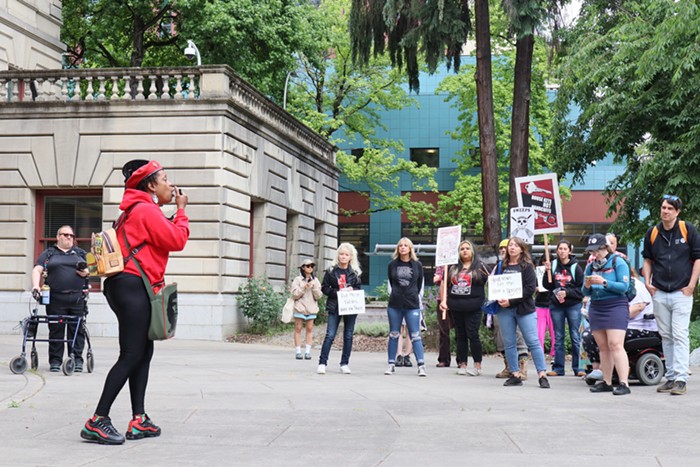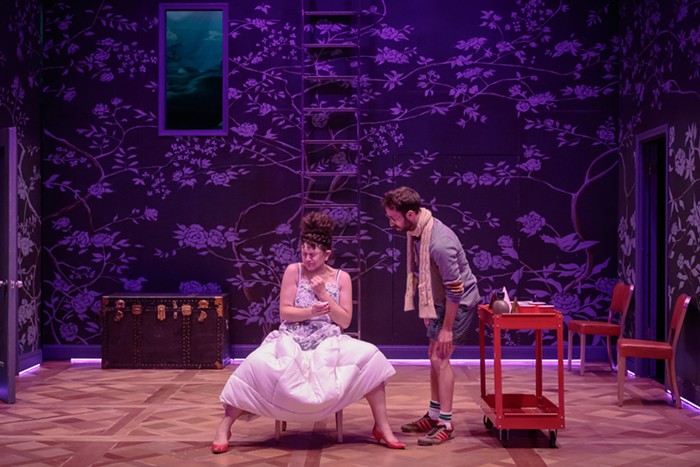THROUGH THE LENS: Portraiture and Self-Portraiture, the group photography show opening Thursday, November 6, at Elizabeth Leach Gallery, pulls together the usual suspects when it comes to contemporary portraiture: Robert Mapplethorpe's portrait of Patti Smith, a Chuck Close portrait of Bill T. Jones, and one Nan Goldin self-portrait taken on a train between Boston and New Haven, its fuzzy focus more reminiscent of Uta Barth's blurred domestic scenes than Goldin's earlier, more confrontational work.
These heavy hitters are worth seeing, sure, but luckily the show packs a few surprises from artists who have yet to achieve art-school superhero status: Arne Svenson's voyeuristic portraits taken through people's windows, his subjects shot in profile and framed by awnings and domestic objects; Delaney Allen's interrupted portraits—his subjects' faces have all been obscured by objects as everyday as the hood of a windbreaker, as bizarre as a rectangle of silver foil with a face pressed into its surface. Allen's and Svenson's images are portraits, but they're not so straight-ahead. They're weird, accidental-looking; Svenson's in particular are even a little menacing.
You already know what Patti Smith looks like. This is the real reason to see Through the Lens.
Downtown, another portrait-heavy show brings together more than 120 photographs at the Portland Art Museum in Blue Sky: The Oregon Center for the Photographic Arts at 40.
Among the four decades' worth of images on display, culled from the varied exhibition history of Portland's Blue Sky Gallery: Annu Palakunnathu Matthew's Feather Indian/Dot Indian series of self-portraits modeled after historical photographs of Native Americans; Les Krims' WASPy family wearing white on Martha's Vineyard, one man looking at the camera who looks disarmingly like Gene Wilder in Willy Wonka's darker moments; a soldier's head eerily disembodied by Suzanne Opton's tight framing.
And only one Larry Sultan photograph.
That's not surprising. Survey shows like this one are often limited when it comes to how many pieces and what works by any given artist are on display. A retrospective of a gallery space should not, by definition, be confused with a greatest hits album.
So imagine my surprise to find that the work of Nan Goldin featured here is her most iconic—notably, the battered self-portrait from The Ballad of Sexual Dependency that made her name, even as its genesis seemed on the verge of destroying her. Here it is, in full painful color, the purple half-moon bruise below her eye, the eye itself half-bloody and looking straight at you, documenting abjection while subverting the traditional power dynamic between subject and object, actor and acted-upon. In shooting her own portrait, Goldin is both.
When I studied photography, I was always told that Goldin couldn't or wouldn't use a camera properly—she only shot in available, not constructed, light—and there's something about seeing the original images up close, outside of a Google image search or an art library, that would seem to support this assertion—the slightly too-blue cast on that undeniable self-portrait, the other images in the museum's quadrant each bearing a different color-cast. A color-cast suggests a mistake, but Goldin's photographs simply read as reflective of the process it took to make them: Here she is, our unreliable narrator, casting the ugliest parts of her life out of the light that was available to her.













